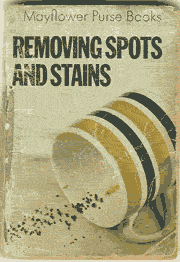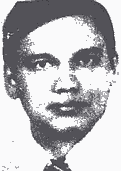Scientific Misconduct Blog Memory Hole: Events of November 1st

29 years ago today: Philip Felig - an important misconduct case begins
Around 1 November 1978 Helena Wachslicht-Rodbard submitted a publication to the The New England Journal of Medicine. The article concerned insulin receptors in patients with Anorexia. What followed became a case study in research misconduct, its definition and the typical reality of its handling.The following is an abstracted summary of a compelling article on the affair from the New York Times of 1 Nov 1981 ("A fraud that shook the world of science").
NEJM sent the article out for peer review. Two reviewers recommend acceptance subject to revision, and one recommended rejection. Wachslicht-Rodbard began the process of revision. While revising the manuscript, Wachslicht-Rodbard received a rather similar paper from The American Journal of Medicine to review. That paper was written by Vijay Soman and his very famous superior, Philip Felig, of Yale. On reviewing the manuscript she found that it looked like her own. Some paragraphs were identical to those in her article and an equation she had devised to calculate receptor numbers was identical. Moreover it appeared that the authors of that paper had been the very reviewers who had recommend rejection of her own unpublished manuscript.
Felig admitted that he had received the manuscript for review, and had passed the paper onto his junior Soman. He did not regard this as inappropriate, and in terms of his rejection of the competing Wachslicht-Rodbard manuscript felt this was "touch and go who got priority" and that "the issue of conflict of interest needed consideration."
Wachslicht-Rodbard wrote to Relman at the NEJM accusing Soman and Felig of plagiarism.
Wachslicht-Rodbard became increasingly incandescent as it appeared that nothing of substance would be done and that the respective institutions were attempting a quiet cover-up. She noted that her own superior had tried to shut her up, and that she was ordered to stop using N.I.H. stationery and time to pursue her grievance. She stated that she was threatened with dismissal.
Soman admitted that he had kept the Wachslicht-Rodbard paper and had copied some of it, including the equation. Felig stated that "I severely reprimanded him for this".
Time went on. Wachslicht-Rodbard became increasingly angry and wrote to Dean Berliner of the Yale School of Medicine expressing doubts about the whole Soman-Felig paper, asking whether the study had been done at all. Felig himself however looked no further and simply stated that there was no problem. Berliner simply accepted this reassurance, and wrote to Wachslicht-Rodbard: "There is no question that the studies of Soman and Felig were done as described in their manuscript" and that he hoped she would consider the matter closed.
She refused. She stated that she would publicly denounce Soman and Felig at a scheduled scientific meeting. It was then agreed that the Soman+Felig paper would be "audited". In the meantime Wachslicht-Rodbard, totally disillusioned, resigned from the NIH, and left research.
Felig selected an "independent" auditor himself. Weeks passed, and nothing happened. However, Felig was then appointed Samuel Bard Professor and chairman of the Department of Medicine at Columbia, a key position. The Wachslicht-Rodbard charges were still confidential and those awarding the post had not been told anything. Felig felt the storm had passed, took Soman along to his new post, and recommended that Soman be appointed assistant professor.
The challenged Soman-Felig paper then appeared in the American Journal of Medicine that very month despite all questions remaining unanswered. Wachslicht-Rodbard was furious and suggested that a new "auditor" be found. New and strange problems were found with the paper (though the conclusions were identical to who own). For one thing, neither the psychotherapists nor the hospital where the studies had been done were named. A graph appeared to have been invented, with data falling neatly on a curve in an impossible manner.
 An investigator (Flier) was appointed. Soman then claimed to have thrown away his raw data from the just-published manuscript. The investigator became suspicious. What raw data was available bore no relation to the paper. Soman then admitted to having invented most of the data. At least one of the six participants did not exist. Soman agreed to resign. The Soman-Felig paper would have to be retracted. All of his previous papers would have to be examined - but not to examine them would be far more scandalous.
An investigator (Flier) was appointed. Soman then claimed to have thrown away his raw data from the just-published manuscript. The investigator became suspicious. What raw data was available bore no relation to the paper. Soman then admitted to having invented most of the data. At least one of the six participants did not exist. Soman agreed to resign. The Soman-Felig paper would have to be retracted. All of his previous papers would have to be examined - but not to examine them would be far more scandalous. Felig wrote apologetic letters. However, he did not inform his new prospective employers apart from vaguely mentioning the issue "in the course of discussing other things".
None of Soman's papers could be reconstructed from underlying data. Of 14 papers by Soman and others most appeared to have been fraudulent. Felig was a co-author, along with others, of most of these papers. Felig could no longer constrain the discussion and stories were circulating. Letters of retraction were sent to journals for 12 papers emanating from Yale Medical School, eight co-signed by Felig were retracted.
Felig met with his new employers but told them only of Soman's falsifications. He told nothing about the plagiarism, his rejection of the competing manuscript, or his failure to "discover in the course of a year what [the investigator] had been able to find out in three hours". He had not bothered to show any integrity. He simply moved to New York and started his new post. The rumors reached his new employers and everything Felig had not revealed was made available. A committee was established to review Felig's actions. It was concluded that Felig had failed to communicate incriminating information about himself.
"The Committee must conclude that the events disclosed by the correspondence, and Felig's attitude when asked about these events, reflect ethical insensitivity and the application of unacceptable standards to scientific research." The committee concluded "with the deepest regret" that Felig should not retain his professorship and posts at Columbia.
Felig was fired. But having not been himself guilty of fraud, he returned to Yale and even got some grants.
Helena Wachslicht-Rodbard decided never to return to research.
This all begs the question - what is scientific fraud? What of pretend naivete over the usual norms of scientific behavior? Felig in retrospect felt it was a "mistake" not to investigate his junior colleague's work. "I can't make sense of it. I consider the actions of the people at Columbia so outrageous that I have never been able to explain them in my own mind".
What of actions that are not fraud (as narrowly defined), but are otherwise grossly inappropriate and incompatible with the business of being a scientist? What of the whistleblower who was silenced and ignored? What of the deliberate failure to examine simple questions when it would seem mandatory to do so? What of the collusion with colleagues to "smooth" things over. If actions are not defined as fraud then they are clearly OK.
Source: Abstracted Summary of "A fraud that shook the world of science" - New York Times Nov 1 1981
Earlier|Later|Main Page
1 comment:
Felig also arranged for Soman's papers to be published in journals where he was editor, threw cold water on papers from competitors during review, and appeared to show no insight into his actions.
Post a Comment